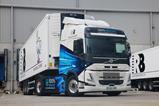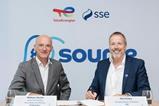In its second-quarter results, US manufacturer Cummins announced that its order backlog for electrolyser systems has surpassed $500 million. The company is making significant strides in the hydrogen sector, with a growing demand for its electrolyser technology. Cummins has allocated approximately 3.5 gigawatts (gW) of manufacturing capacity across different global locations, including Belgium, China, Spain, and the US.

Cummins recently established its inaugural US manufacturing site in May this year. This facility, situated within its existing power generation facility in Fridley, Minnesota, spans around 8,300sq-m and is dedicated to producing up to 500 megawatts (MW) of electrolyser capacity.
Cummins operates within the Hydrogen and battery-electric sector through its segment named Accelera. During the second quarter, Accelera achieved sales amounting to $85 million, according to the earning announcement. This marked an impressive growth rate, more than doubling the sales figures compared to last year.
Despite the robust sales performance, Accelera reported a loss of $114 million for the quarter. This loss can be attributed to the costs associated with the development of electric powertrains, fuel cells, and electrolyser systems, along with products aimed at supporting battery electric vehicles.
In addition to these developments, Cummins disclosed it is paying Air Liquide a total of $335 million for its 19% ownership stake in proton exchange membrane electrolyser company Hydrogenics. This sum includes the settlement of $48 million in shareholder loans. The payment process has already commenced, with $175 million paid on July 31, 2023. The remaining $160 million will be disbursed in three instalments over the course of 2025.
Looking forward, Accelera’s losses are projected to range from $420 million to $440 million by the end of the year. Cummins has ambitious plans to invest more than $1 billion in enhancing its US manufacturing network. This investment aims to enable the creation of “fuel agnostic” engines capable of operating on diesel, fossil gas, or hydrogen fuels.


















